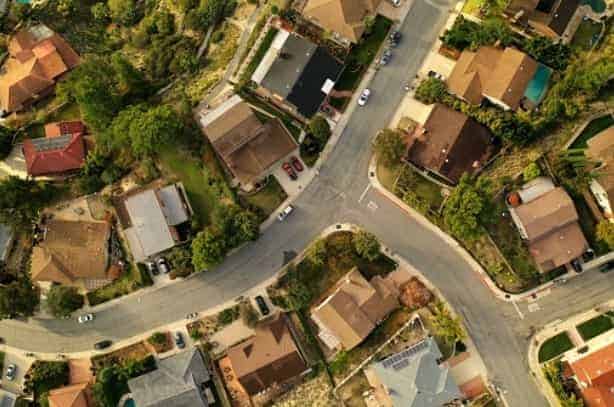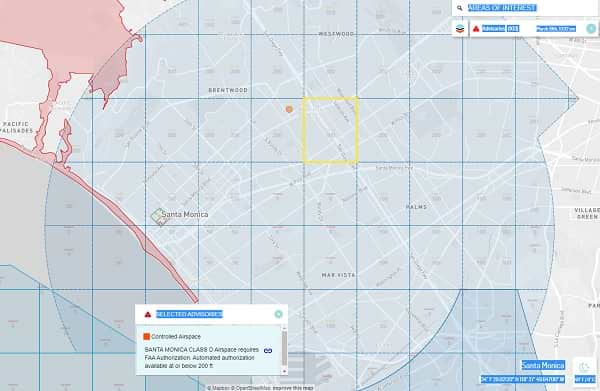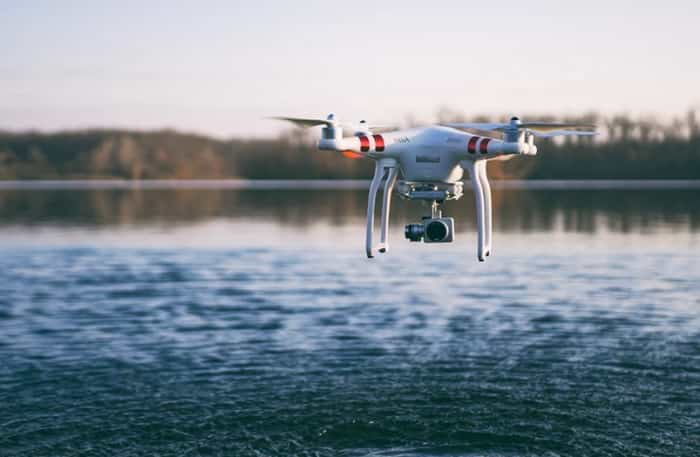
You finally got that drone that you’ve been dreaming about for months, but it just dawned on you that you have no idea if you can even fly it around your home in your neighborhood. I did some research when I first got my drone and this is what I found.
You can fly a drone in your neighborhood, which is classified as a residential area as long as you don’t land or take off on private property without getting the tenant or owner’s permission first. You also need to make sure that you don’t live within a 5-mile radius of an airport, or if there are any local drone restrictions in your area.
The reason why you can’t find a direct answer online is because it heavily depends on the residential area that you live in. Each country, county, and city have their own drone laws. But here’s how you can find out if you’re allowed to fly in your residential area.
How To Find Out If You Can Fly In Your Neighborhood
Even if you know your countries drone laws, you still to do research on your county and city drone laws. That being said, there are some guidelines I can give you to help you decide if it’s legal to fly in your residential area or not.
Do you live close to an airport?
Check that you’re not within a 5-mil radius of an airport. You can do this by going to airmap.com, or you can download the Airmap app on your phone.
Airmap integrates with the FAA and gives you some really useful information. For example, it will show you if there are any drone flight restrictions in your area. And if there are, it even allows you to apply for LAANC, (Low Altitude Authorization and Notification Capability.)
INSIDER TIP: If you do live within a 5-mile radius of an airport you’ll still be allowed to fly, you just need to apply for LAANC authorization first through the Airmap app that can be downloaded from the app store for free. I wrote a full guide on how you can notify the airport.
Have you checked your county and city drone laws yet?
Check county level drone laws. You can easily do this by googling your county or city name, followed by “drone laws.” Then look for a government website that usually ends in .gov.
Look out for any drone restriction on the Airmap app or airmap.com.
I already mentioned this app before but it’s worth talking about again. The Airmap app gives some really useful information on the area you’re flying in. It will list all flight restrictions imposed in the area, which is pretty neat. If you don’t want to install the app you also have the option of using the website airmap.com. It’s a must for drone enthusiasts these days!

Ask other drone hobbyists in your area.
There are a ton of drone pilots buzzing around the United States and the rest of the world, so do some research and find some in your neighborhood. Who knows, you might make a new friend. Regardless they’ll have a better understanding of what your are, and what you’re not allowed to do with your drone in the area. This is a quick way to cut the learning curve so that you don’t have to learn it from the school of hard knocks.
Look for local drone enthusiast Facebook pages or groups. This is probably the best way to find them, but if you don’t come right you can also try some of these popular drone forums:
- droneflyers.com/talk/
- mavicpilots.com
- community.uavcoach.com
- phantompilots.com
- www.avforums.com/forums/drone-forum.446
How to Keep The Neighbors Happy
If one of your neighbors gets upset, they could rightfully stop you from flying your drone. Drones are extremely loud, so they could easily complain about the noise to the police, which would force you to stop flying your drone in that area for a very long time.
You could risk it, worst case scenario you’ll just get asked to stop flying. However, the downside is you probably won’t be able to fly near your home ever again.
Prevention is always better than cure, so when you fly your drone in your residential area, make sure you follow these tips first.
Let your neighbor know, communication is key!
Be courteous about it, kindly ask if it’s ok to fly your drone around your neighborhood. They will be pleasantly surprised that you asked them and you’ll gain a supporter instantly.
Just a quick tip. Ask them what time would suit them best. Imagine if you’re old and nap time is 2 pm, or you have a baby and you generally get your baby to go to sleep around midday. The LAST thing you would want is a noisy drone buzzing around your bedroom window. Communication will help avoid this.
You could also offer to make a whatsapp group for your neighbors, just so that you can give them a heads up whenever you’re planning to fly your drone. And if your neighbors baby is sleeping for example, they can very qucikly and politely ask you to hang back until later.
Fly safely.
It’s tempting, I’ve been there. The excitement of being able to go wherever you want with your drone. It takes a bit of will power to be able to hold back. But don’t fly recklessly, all it takes is one mistake and someone can get seriously injured. I recently wrote an article on how badly a drone can hurt a human, and believe me, it can get ugly.
Flying safety is not only courteous, its the law! So If you fly around like a maniac you could even get a serious fine. Which leads me on to…
Don’t break any drone laws.
It’s really easy to break drone laws in residential areas because there are generally a lot of buildings and people in the area. Some of the main ones are;
- Don’t fly recklessly. This includes harassment, recklessness, nuisance, and voyeurism.
- No media. You shouldn’t take pictures or videos of any private property or person without their consent.
- Don’t fly your drone over groups of people or private property without consent.
- Fly your drone in a line of sight. This means that you need to be able to see your drone at all times. You can’t fly on the other side of a building.
- Keep your drone lower than 400 feet above the ground level. As soon as your drone pops its head above that height, your drone will technically be in controlled airspace. This could get you into some serious trouble, so stay low.
These laws don’t include local or county laws, so make sure you do some extra research to make sure you don’t get any grouchy neighbors. But can you see how it can quickly become difficult to fly in residential areas? There are so many ways that you could upset someone that it quickly difficult. But just try your best!
Where Else Can You Fly Your Drone?

Did I just put you off from flying in your residential area? Or are you looking for somewhere more exciting to fly? I’ve got your back! There’s actually a lot of places you can fly your drone with better views than your neighbors back garden.
Sports fields.
Fields are usually awesome especailly for beginners. There’s a ton of room for mistakes and generally schools don’t mind at all. Just ask for permission and make sure there isn’t any sport games on.
Your local park.
In a lot of cases, it’s perfectly fine to fly in a local park. However, there are a few suggestions that I can make:
I would advise that you avoid busy times such as afternoons when kids get out of school.
Check that you’re not within 5-miles of an airport. If you are though you can still fly, you just need to notify the airport of your flight with a simple LAANC application. It’s actually really easy to do, you can apply for flight authorizations using the Airmap app on your phone. I explained exactly how you can do it in this article.
Check local drone laws. You can do this my going to your city’s website and finding their drone laws page. Should be really easy to find on google. Simply type “CITY NAME drone laws,” and it should pop right up.
State park.
State parks are a grey area. Different states have different laws so you need to make sure you check in your state before you decide to fly here.
A lot of the time you won’t find the rules advertised on the signboards, but you should be able to find the drone rules on their websites.
I wrote a full article explaining the laws for most state parks and how to find out if you can fly in one.
National park.
But Henry, I heard you can’t fly in a National park. Yes, you are partially right, but that law only applies to taking off or landing your drone in a national park. This does not apply to flying your drone over a national park. They even said so themselves in this article so it’s 100% legal to fly over a National park. That being said f you’re wondering how to do it, I covered all the details on how to fly over a national park in this article.
